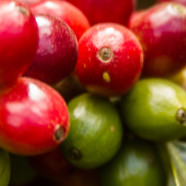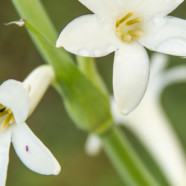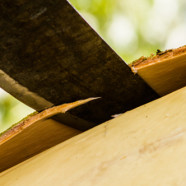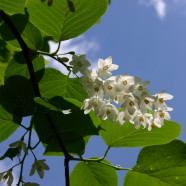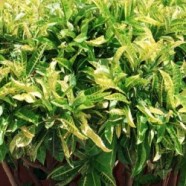Coffee Absolute
Great smell and taste! Also good as an active ingredient (Who wants to avoid cellulitis?) The coffee absolute, soluble in alcohol, has a strong coffee smell and holds its balsamic characteristic. This ingredient can be readily used in perfumery because of its solubility in alcohol. Extraction process: Alcoholic extraction of the Coffee oil followed by a filtration at freezing temperatures and posterior removal of the alcohol. Download Technical Data Sheet Download Material Safety Data Sheet Download Material Safety Data Sheet...
Read MoreStyrax Gum Resinoid
The ambery balsamic gum. The Styrax gum Resinoid, made by Nobs, is an alcoholic extract made from the Styrax resin coming from Honduras. It is soluble in Ethanol. All of it’s natural characteristics are held with a deep leather note with it’s cinnamic body and balsamic character. Extraction process Alcoholic extraction of the Styrax resin followed by a filtration at freezing temperatures and posterior removal of the alcohol. Download Technical Data Sheet. Download Material Safety Data Sheet. Download Technical Data Sheet 2018...
Read MorePeru Balsam Resinoid
A sweet balsamic scent coming from El Salvador. The Peru Balsam Resinoid, made by us in El Salvador, is an alcoholic extract made from the Peru Balsam. It is soluble in Ethanol. It holds its natural smell of sweet and balsamic notes and warm texture. Extraction process Alcoholic extraction of the Peru Balsam resin followed by a filtration at freezing temperatures and posterior removal of the alcohol. Download Technical Data Sheet Download Material Safety Data Sheet Download Technical Data Sheet 2018 Download Material Safety Data Sheet...
Read MoreVetiver Essential Oil
Unchallenged in its ability to impart green woody notes, vetiver is a classic. Unchallenged in its ability to impart green woody notes, vetiver is a classic. It is a widely used note, particularly present in many iconic masculine perfumes. It is multi faceted and complex, while still retaining a cohesive identity. It imparts rooty and woody notes to a composition, containing a background of warm earth, soft honeyed touches and slight roasted coffee nuances. While possessing a formidable strength, it maintains a pleasantly soft and velvet texture which imparts both dry and humid effects. This vetiver is pure and direct, both powerful and diffusive while at the same time retaining a subtle elegance. It is extremely close to the actual vetiver root, but with a cleaner and more refined impact. Its texture is slightly drier and more transparent than the average offering. This leads to it being an extremely versatile note. It can be used in any work where a clear and woody character is desired. Its purity allows it to be used as either a reinforcing or as a dominant theme within a composition. Powerful, direct and elegant. It blends with citruses and floral notes with equal ease, having an exceptional affinity for rose. Its tenacity is nearly unmatched and it balances perfectly with grapefruit, lavender, jasmine and ylang-ylang. Extraction process Our Vetiver essential oil is distilled using a hydrodifussion still. The hydrodifusion still injects vapor at the top of the machine and condenses the vapor in the bottom. The vapor has pulled with it the essential oils contained within the Vetiver roots. This is later separated from the water using a Florentine flask, a traditional decanter used in perfumery to separate oil from water. Oil will separate from the water because oil and water do not mix. The distillation delicately continues for twenty-four hours in order to recover all of the essential oil and active ingredients that can be found within the Vetiver roots. Low temperatures and pressures are used in order to ensure a product that is as true to nature as possible. The Vetiver essential oil is then recovered from the Florentine flasks and left to age for six months in order for it to stabilize. This is what is then sold as a Vetiver essential oil produced through hydrodifusion. Download Technical Data Sheet Download Material Safety Data Sheet...
Read MoreStyrax Gum
The ambery balsamic gum. As a natural raw material, styrax can be used in a multiple number of applications. Even if it is an important ingredient in perfume compositions, it can also be used as an active ingredient in cosmetics and even in pharmaceutics. Topping of with a light styrene plastic note, it gives way to a soft cinnamic body with a balsamic character. Fruity and honey aromas are in the continuous gradations of its smell. It is considered under the amber family due to its leathery and animalic tones that are combined with an indulgent floral touch. Liquidambar styraciflua L, is a tree that is mainly present in the mountain region of the department of Olancho in Honduras. It is also present in important volumes in other regions of the country and even at some degree in the northern mountain ranges of El Salvador. The use of styrax gives aromatic blends a gourmand spicy tone that goes great in amber compositions. It can also be used as a fixative. It is considered as an important note in the chypre and oriental family, where it is often used. Due to its dry and smoky tonalities, it is used in bold leather compositions. You can apply styrax whenever a resinous balsamic note is called for due to its unmistakable incense like facets evocative of glue and cinnamon. It is a note that combines particularly well with woody scents. It also conglomerates well with other notes such as benzoin, vanilla, Peru balsam and cinnamon. Softens and enhances the bottom notes of floral compositions. Styrax has been historically used since before the time of the colony for medical preparations. Some of its active properties are: antiseptic, carminative, diuretic, expectorant, parasiticide, poultice, salve, sedative, stimulant, vulnerary, anti-‐inflammatory, anti-‐microbial and wound healing due to its aid in skin regeneration. It is also used in food aromas as a fixative. Styrax can similarly be engaged as a stabilizer in some pastry formulations. Extraction process Extraction from the tree start by making cuts around the stem of the trees. The length of each incision is of around 15 cm long with a depth of 3 to 4 cm. It is a diagonal cut of 45° since what the resin needs to accumulate in said cavity so that then you can collect it in a monthly fashion. What you obtain is then a mixture of resin, water, insects and vegetable residues. An artisanal purification takes place in the fields: The resin is heated on top of firewood in until the unwanted residues start to float. This is separated but the resin still has some water in it. Some of the exporters therefore continue evaporating the water or getting rid of it through other processes like centrifugation. Download Technical Data Sheet. Download Material Safety Data Sheet. Download Technical Data Sheet 2018 [ninja_form...
Read MoreCascarilla Essential Oil
The spicy woody detail This oil gives a bright and effervescent spicy top and heart note, with a warm and bracing texture. While sharing a similarity to other spice oils such as cinnamon nutmeg and anise, it distinguishes itself with delicate eucalyptus-like touches. These properties give it the rare characteristic of containing warming and cooling sensations within the same note. Able to impart character in very small amounts, it’s power is often underestimated. It gives a special diffusivity and personality to a blend, being especially able to impart a unique signature to chypre and oriental compositions. Blends well with a plethora of other spice oils, cedar and geranium type notes. While used in perfumery, it is used as a very exclusive woody and spicy heart note in composition; cascarilla also has a place in flavoring, aromatherapy and cosmetics. It is considered an expectorant and is recognized for its aid in digestive problems as well. In the aroma flavor sector, it is particularly recognized for its role as a natural flavoring agent in the tobacco industry. Extraction process The cascarilla essential oil is obtained from the bark of the Croton trees, locally known as copalchí. These are grown all over the country as windbreakers for the coffee plantations on the mountains in order to give the smaller coffee trees some shadow and protect them from harsh weather conditions. Our Cascarilla essential oil is distilled using a hydrodifussion still. The hydrodifusion still injects vapor at the top of the machine and condenses the vapor in the bottom. The vapor has pulled with it the essential oils contained within the Cascarilla bark. This is later separated from the water using a Florentine flask, a traditional decanter used in perfumery to separate oil from water. Download Technical Data Sheet Download Material Safety Data...
Read More

